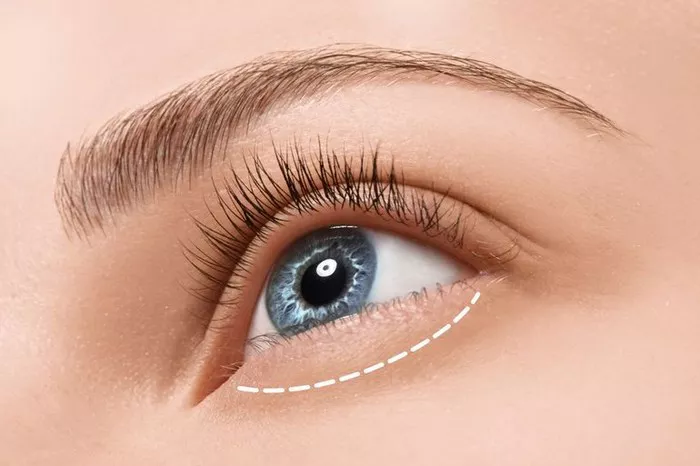Blepharoplasty, also known as eyelid surgery, is a cosmetic procedure aimed at rejuvenating the appearance of the eyelids. It can address concerns such as droopy eyelids, under-eye bags, excess skin, and wrinkles. Like any surgical intervention, blepharoplasty has its own set of advantages and disadvantages. In this article, we will explore the pros and cons of blepharoplasty to help individuals make informed decisions about undergoing this procedure.
Pros of Blepharoplasty
-
Improved Aesthetics
One of the primary benefits of blepharoplasty is the significant improvement it can bring to the appearance of the eyes and surrounding areas. The procedure can help correct droopy eyelids, reduce puffiness and under-eye bags, and smooth out wrinkles, resulting in a more youthful and refreshed look.
-
Enhanced Self-Confidence
Many individuals who undergo blepharoplasty report an increase in self-confidence and self-esteem. By addressing cosmetic concerns that may have been causing self-consciousness, blepharoplasty can help individuals feel more comfortable and confident in their appearance.
-
Restored Field of Vision
In cases where excess skin or fat on the upper eyelids obstructs vision, blepharoplasty can significantly improve the field of vision. By removing the excess tissue, the eyelids are elevated, allowing for clearer and unobstructed eyesight.
-
Long-Lasting Results
The results of blepharoplasty are generally long-lasting, with many individuals enjoying the benefits of the procedure for years to come. While the natural aging process continues, the improvements achieved through blepharoplasty can be maintained and provide ongoing satisfaction.
-
Minimally Invasive
Blepharoplasty is considered a relatively minimally invasive procedure. Depending on the extent of the surgery and the technique employed, it can be performed using local anesthesia with sedation or general anesthesia. Minimally invasive procedures often result in shorter recovery times and reduced risks compared to more extensive surgical interventions.
-
Complementary Procedures
Blepharoplasty can be performed in conjunction with other cosmetic procedures to achieve comprehensive facial rejuvenation. For example, it is often combined with facelifts, brow lifts, or injectable treatments to provide a more harmonious and balanced aesthetic outcome.
Cons of Blepharoplasty
-
Surgical Risks
As with any surgical procedure, blepharoplasty carries inherent risks and potential complications. These can include infection, bleeding, adverse reactions to anesthesia, scarring, asymmetry, dry eyes, temporary or permanent changes in sensation, and eyelid malposition. While these risks are relatively rare, it is important to discuss them thoroughly with a qualified surgeon during the consultation phase.
-
Recovery Period
The recovery period following blepharoplasty can vary depending on the individual and the extent of the surgery. Swelling, bruising, and discomfort are common in the initial stages of recovery, and it may take several weeks for these symptoms to fully resolve. During the recovery period, individuals may need to avoid certain activities, such as heavy lifting or strenuous exercise, and follow post-operative care instructions diligently.
-
Scarring
While efforts are made to minimize scarring, it is important to note that blepharoplasty does involve incisions. The visibility of scars can vary depending on factors such as the individual’s healing process, the surgeon’s technique, and proper scar management. However, scars typically fade over time and can often be concealed within the natural creases of the eyelids.
-
Potential Unsatisfactory Results
While the majority of individuals experience significant improvement and satisfaction following blepharoplasty, there is a possibility that the results may not meet the individual’s expectations. It is important to have realistic expectations and thoroughly communicate your desired outcome with the surgeon during the consultation process to ensure a shared understanding.
-
Cost Considerations
Blepharoplasty is a surgical procedure and can involve costs associated with the surgeon’s fees, anesthesia, facility fees, post-operative medications, and follow-up appointments. It is important to consider the financial aspect of the procedure and consult with your healthcare provider or surgeon to understand the expected costs and any potential insurance coverage.
Conclusion
Blepharoplasty offers numerous benefits in terms of improving aesthetics, restoring self-confidence, and addressing functional concerns. It can provide long-lasting results and be performed as a minimally invasive procedure. However, it is important to weigh these benefits against the potential risks, recovery period, and cost considerations associated with the surgery.
Consultation with a qualified and experienced plastic surgeon is essential to thoroughly discuss the pros and cons of blepharoplasty, assess your candidacy for the procedure, and address any concerns or questions you may have. By making an informed decision and ensuring realistic expectations, individuals can move forward with blepharoplasty with confidence, knowing that they have thoroughly considered the potential advantages and disadvantages of the procedure.

